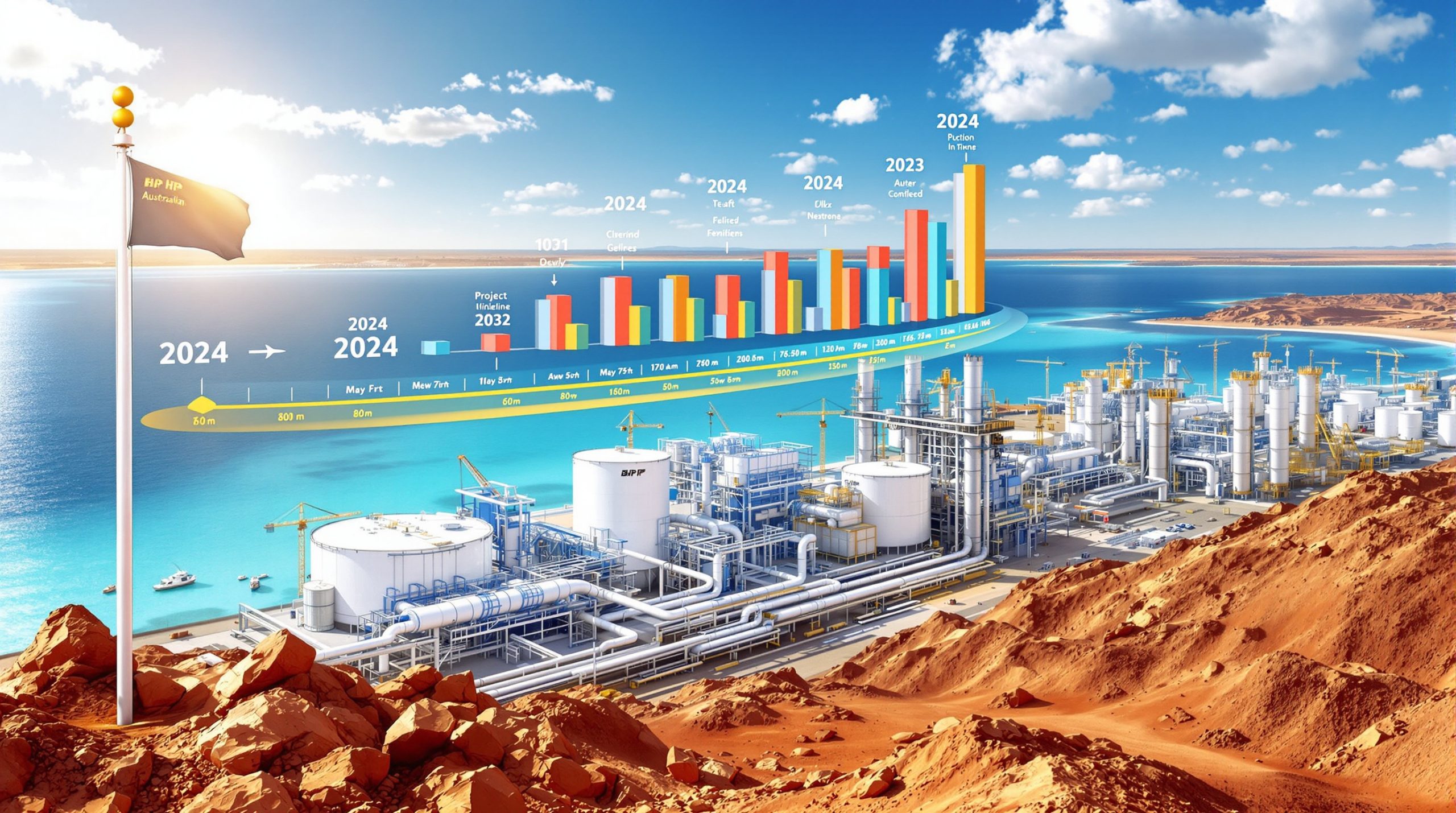Why Are China's Rare Earth Exports Declining?
China's rare earth exports have fallen significantly, dropping 16% from March to 4,785 tonnes in April 2025, according to the latest data from China's statistics bureau. This reduction marks a strategic shift in Beijing's approach to critical minerals amid escalating trade tensions with the United States and other Western nations.
The decline comes at a pivotal moment in global supply chains, as manufacturers worldwide depend on these crucial elements for everything from smartphones to missile guidance systems. Industry analysts point to this export reduction as potentially one of the most consequential developments in the ongoing US-China trade strategies disputes.
The Strategic Export Control Measures
In early April 2025, China made the decisive move to add 7 of the 17 rare earth elements to its export control list. These restrictions weren't implemented in isolation but represent a calculated response to the Trump administration's increasingly punitive tariffs on Chinese goods.
The affected elements include dysprosium, terbium, and neodymium – materials essential for producing high-performance magnets used in electric vehicles, wind turbines, and defense applications. By restricting these specific elements, China has targeted industries where alternative suppliers cannot quickly fill the gap.
"China's strategic control of rare earth exports represents a calculated leverage point in the ongoing trade tensions. The impact extends far beyond immediate price effects, potentially reshaping global supply chains and accelerating the development of alternative sources," notes Dr. Julie Henderson, Critical Minerals Analyst.
These controls require exporters to obtain special permits through a complex certification process, effectively creating a throttle valve that Chinese authorities can adjust according to geopolitical circumstances.
Historical Context of China's Mineral Export Restrictions
This isn't China's first use of mineral export restrictions as a strategic tool. Over the past two years, Beijing has deployed a variety of control mechanisms including:
- Complete export bans on certain strategic minerals
- Partial restrictions requiring special permits
- Certification requirements that temporarily halted exports
- Quotas limiting total export volumes
- Price floors ensuring minimum export values
The most telling precedent came in August 2023, when restrictions on gallium and germanium – critical materials for semiconductor manufacturing – caused exports to drop to zero for two consecutive months. Only after implementing a rigorous permit system did exports resume, albeit at significantly reduced volumes.
Similar patterns emerged with graphite in December 2023 and antimony in January 2024, demonstrating China's willingness to leverage its dominant position in critical minerals energy transition during times of geopolitical tension.
How Do Rare Earths Impact Global Supply Chains?
Rare earth elements, despite their name, are relatively abundant in the Earth's crust. What makes them "rare" is their dispersed distribution and the complex, environmentally challenging processes required to extract and refine them to usable purity levels.
These 17 elements – including the lanthanide series plus scandium and yttrium – possess unique magnetic, luminescent, and electrochemical properties that make them irreplaceable in many high-technology applications. Their strategic importance far exceeds their modest production volumes.
Critical Applications of Rare Earth Elements
The versatility of rare earth elements makes them indispensable across numerous industries:
-
Defense systems: Precision-guided munitions, radar systems, night vision devices, and satellite communications all rely on rare earth components. A single F-35 fighter jet contains approximately 417 kilograms of rare earth materials.
-
Renewable energy technologies: Wind turbines require roughly 600-1,000 kg of rare earths per megawatt of capacity, primarily in their permanent magnets. Electric vehicle motors likewise depend on neodymium-iron-boron magnets.
-
Electronics manufacturing: Smartphones, computers, and displays use small but critical amounts of rare earths for components like speakers, vibration motors, and displays.
-
Medical imaging equipment: MRI machines utilize rare earth magnets, while certain contrast agents for medical imaging contain gadolinium.
-
Telecommunications infrastructure: Fiber optic cables, signal amplifiers, and network components incorporate various rare earth elements.
-
Laser and optical technologies: Yttrium, erbium, and europium enable specialized lasers for industrial cutting, medical procedures, and scientific research.
Supply Chain Vulnerabilities Exposed
The current export restrictions have exposed several critical vulnerabilities in global supply chains:
-
Concentrated supply: China accounts for approximately 70% of global rare earth mining and over 85% of processing capacity, creating an inherent supply risk.
-
Limited alternative suppliers: While countries like Australia, the United States, and Myanmar have rare earth resources, they lack China's comprehensive processing infrastructure.
-
Extended development timelines: New mining operations typically require 7-15 years from discovery to production, making rapid supply diversification impossible.
-
Technical expertise gap: The complex separation and processing of rare earths involves specialized knowledge that has been concentrated in China for decades.
-
Environmental challenges: Processing rare earths generates significant toxic waste, making permits difficult to obtain in countries with strict environmental regulations.
These vulnerabilities create ripple effects throughout manufacturing supply chains, potentially affecting production schedules for everything from consumer electronics to military hardware. Recent China rare earth trade disruption has further complicated the situation, adding another layer of uncertainty to global supply chains.
What Are The Economic Implications of Restricted Rare Earth Supplies?
Impact on Global Manufacturing
The constriction of rare earth supplies threatens to create cascading effects across multiple industries:
-
Production disruptions: Manufacturers without adequate stockpiles may face production slowdowns or stoppages as inputs become scarce.
-
Cost increases: Limited supply typically drives prices higher, potentially increasing production costs for high-tech goods by 5-15%.
-
Delivery delays: Extended lead times for critical components could delay product launches and fulfillment of existing orders.
-
Design modifications: Some manufacturers may be forced to redesign products to use less rare earth material or alternative technologies.
-
Supply chain reconfiguration: Companies may need to invest in new supplier relationships, potentially relocating production closer to alternative sources.
In the defense sector, these disruptions are particularly concerning. Military contractors often operate with just-in-time inventory systems that leave little buffer against supply interruptions. Critical defense programs could face delays if alternative supply chains aren't established quickly.
Price Volatility and Market Response
Markets have already begun responding to China's export controls with several observable patterns:
-
Price increases: Spot market prices for terbium oxide have risen 25% since the announcement of export controls, while dysprosium oxide has seen a 17% increase.
-
Strategic stockpiling: Both governments and private companies are accelerating their purchases to build inventory buffers against future restrictions.
-
Investment in alternatives: Funding for rare earth projects outside China has surged, with over $1.2 billion committed to new projects in the past six months.
-
Recycling initiatives: Companies specializing in rare earth recovery from electronic waste have reported significant increases in both investment and customer inquiries.
-
Material substitution research: R&D spending on alternative materials has increased, particularly for applications like permanent magnets where rare earths are currently essential.
"The market is responding rationally to a supply risk by seeking diversification, but the time lag between investment and new production means we're likely to see constrained supply and elevated prices for at least 3-5 years." – Bloomberg analysis of rare earth markets, May 2025
According to The Washington Post, these supply constraints are creating significant challenges for U.S. manufacturers who depend on these materials.
How Is China Balancing Domestic Needs With Export Controls?
Strategic Resource Management
China's approach to rare earth management balances several competing priorities:
-
Domestic industrial development: China's manufacturing sector, particularly in high-tech areas, requires increasing quantities of rare earths. The "Made in China 2025" initiative specifically targets industries that rely heavily on these materials.
-
Geopolitical leverage: Export controls provide China with negotiating power in broader trade disputes, particularly with the United States.
-
Resource conservation: Chinese officials have expressed concerns about depleting domestic reserves too rapidly, noting that at current production rates, some resources could be exhausted within 15-20 years.
-
Environmental remediation: Decades of poorly regulated mining have created significant environmental damage in key mining regions like Inner Mongolia, prompting stricter oversight.
-
Combating illegal operations: China has conducted multiple campaigns against unauthorized mining and smuggling operations, which had previously accounted for an estimated 20-30% of total production.
This delicate balancing act requires Chinese policymakers to continuously adjust export quotas, permitting processes, and enforcement efforts.
Domestic Consumption Trends
China's internal usage of rare earths has grown steadily over the past decade, reflecting its industrial development strategy:
-
Electric vehicle production: China produced over 8 million electric vehicles in 2024, consuming approximately 8,000 tonnes of neodymium and dysprosium.
-
Wind power expansion: China installed 72 GW of wind power capacity in 2024, requiring roughly 43,000 tonnes of various rare earth elements.
-
Electronics manufacturing: As the world's largest producer of consumer electronics, China's domestic industry consumes significant quantities of rare earths for screens, speakers, and other components.
-
Military modernization: China's expanding defense sector requires rare earths for advanced systems, from hypersonic missiles to quantum computing research.
By prioritizing domestic users over export markets, China ensures its strategic industries maintain access to essential materials even as global supplies tighten.
What Other Commodities Show Resilience Despite Trade Tensions?
Bright Spots in China's Commodity Imports
Despite the escalating trade war, several commodities showed strong import performance in April:
-
Copper concentrate: Imports reached a record 2.92 million tonnes, up 12% year-on-year, driven by industrial demand and potentially strategic stockpiling.
-
Iron ore: Imports exceeded 100 million tonnes for the first time this year, reflecting both strong domestic steel demand and easing of supply constraints from Australia.
-
Crude oil: Imports remained robust at approximately 10.3 million barrels per day, as Chinese refiners took advantage of relatively low global prices.
-
Soybeans: Agricultural imports showed resilience despite tariff concerns, with volumes up 8% compared to the same period last year.
These strong import figures suggest that despite geopolitical tensions, China's industrial economy continues to demonstrate underlying strength.
Factors Supporting Commodity Demand
Several factors have contributed to the resilience in China's commodity imports:
-
Infrastructure investment: Government stimulus programs focused on transportation and energy infrastructure continue to drive demand for base metals and construction materials.
-
Manufacturing resilience: Despite concerns about export markets, Chinese manufacturing output grew by 5.7% in the first quarter of 2025.
-
Strategic stockpiling: The State Reserve Bureau has increased purchases of key materials, creating additional demand beyond immediate industrial requirements.
-
Supply normalization: Disruptions at major mining operations in Chile, Australia, and Brazil have eased, allowing for higher import volumes.
-
Inventory replenishment: Some industries had drawn down inventories in late 2024 due to high prices and are now rebuilding stocks at more favorable rates.
This continued demand for bulk commodities highlights the complex nature of China's economy and trade relationships, with sectoral impacts varying significantly even amid broader tensions.
How Are Other Countries Responding to China's Rare Earth Strategy?
Diversification Efforts
Countries and companies worldwide are pursuing multiple strategies to reduce their vulnerability to rare earth supply disruptions:
-
New mining projects: Australia's Lynas Corporation has expanded production at its Mount Weld mine, while MP Materials has reactivated the Mountain Pass mine in California. Canada's Nechalacho project began production in 2023.
-
Alternative materials research: Toyota has developed motors that reduce rare earth content by up to 50%, while researchers at MIT have created iron-nitrogen compounds that could potentially replace some rare earth magnets.
-
Recycling technologies: Companies like Redwood Materials and Li-Cycle have developed processes that can recover up to 95% of rare earths from waste streams, though implementation remains limited.
-
Strategic partnerships: Japan and Australia signed a Critical Minerals Partnership in 2024, facilitating Japanese investment in Australian mining operations in exchange for preferential access to production.
-
Process innovations: Several companies are developing new extraction methods that could make previously uneconomical deposits viable, including bio-leaching and solvent extraction techniques.
These efforts face significant challenges, including lengthy development timelines, high capital costs, and technical uncertainties. Even with accelerated investment, most analysts believe meaningful diversification will take 5-10 years to achieve significant scale.
Policy Responses
Governments have implemented various policy measures to address rare earth vulnerability:
-
Strategic reserves: The U.S. Defense Logistics Agency has expanded its rare earth stockpile program, with a target of maintaining a three-year supply of critical elements.
-
Research funding: The European Union's Horizon Europe program allocated €240 million specifically for rare earth alternatives and recycling research in 2024.
-
Regulatory streamlining: Australia, Canada, and the U.S. have created expedited permitting processes for critical mineral projects, reducing approval timelines by up to 50%.
-
Trade agreements: The Quad countries (U.S., Japan, Australia, India) established a Critical Minerals Security Initiative in 2023 to coordinate production and processing capacity.
-
Domestic production incentives: Tax credits, loan guarantees, and direct subsidies have been implemented in multiple countries to support rare earth mining and processing.
These policy initiatives reflect growing recognition that rare earth supply security represents a national security priority beyond normal market considerations. The recent Trump executive order on minerals further highlights the urgency of developing domestic capabilities in the United States, while Australia critical minerals reserve initiatives show similar strategic thinking in other countries.
What Historical Lessons Can We Learn From Previous Rare Earth Disputes?
The 2010-2011 Rare Earth Crisis
The current situation bears striking similarities to events from 2010-2011, providing valuable historical context:
-
Export quota cuts: China reduced export quotas by 40% in 2010 following a territorial dispute with Japan over the Senkaku/Diaoyu Islands.
-
Price impacts: Rare earth prices skyrocketed, with some elements like dysprosium seeing price increases of over 1,000% in under a year.
-
Japanese vulnerability: Japan, as the world's leading consumer of rare earths for high-tech manufacturing, was particularly affected.
-
Alternative sourcing: Countries scrambled to develop alternative supplies, with over 400 rare earth projects announced globally between 2010 and 2012.
-
Market collapse: As prices peaked in 2011, demand destruction and speculative excess led to a market collapse, with prices dropping over 80% from their highs.
This historical episode demonstrates both the immediate impact of supply restrictions and the market's ability to eventually adjust through a combination of substitution, recycling, and new production.
Long-Term Market Adjustments
The aftermath of the 2010-2011 crisis led to several structural changes in the rare earth market:
-
Supply diversification: Lynas Corporation emerged as the only significant non-Chinese producer, capturing approximately 10% of global market share.
-
Material efficiency: Manufacturers redesigned products to reduce rare earth content, with some magnet applications achieving 20-30% reductions.
-
Stockpile strategies: Japan established a national rare earth stockpile and required domestic companies to maintain minimum inventory levels.
-
Industry consolidation: China consolidated its domestic rare earth industry from over 100 small producers to six state-controlled enterprises.
-
Pricing mechanisms: More sophisticated pricing models and futures contracts developed, providing better risk management tools.
These adjustments demonstrate markets' adaptive capacity but also highlight that full adjustment requires years rather than months, creating significant transition vulnerabilities.
What Could Happen Next in the Rare Earth Supply Chain?
Short-Term Outlook
The immediate future is likely to bring several developments:
-
Extended certification periods: Chinese authorities may further lengthen the approval process for export permits, creating de facto restrictions without formal quotas.
-
Selective targeting: Restrictions may be applied more stringently to strategic elements like dysprosium and terbium while allowing greater exports of more abundant elements like cerium.
-
Price volatility: Spot market prices could see 50-100% increases for constrained elements, particularly those critical for permanent magnets.
-
Diplomatic negotiations: Behind-the-scenes discussions between major economies and China may lead to partial exemptions or quota adjustments for certain countries or applications.
-
Emergency allocations: Western governments may implement rationing systems for available supplies, prioritizing defense and critical infrastructure applications.
Industry experts anticipate that these near-term disruptions will be most severe through late 2025, with gradual easing as alternative supplies begin reaching markets in 2026-2027.
Long-Term Strategic Shifts
Looking 3-10 years ahead, more fundamental changes may emerge:
-
Geographical redistribution: Rare earth mining and processing could expand significantly in Australia, Canada, the United States, and East Africa, potentially reducing China's market share below 50%.
-
Technological adaptations: Next-generation technologies may reduce or eliminate rare earth requirements in some applications, particularly in motor design and electronic components.
-
Circular economy development: Recycling rates
Ready to Invest in the Next Major Mineral Discovery?
Discover why major mineral discoveries like those in rare earth elements can lead to substantial market returns by exploring Discovery Alert's dedicated discoveries page. Begin your 30-day free trial today to receive real-time alerts on significant ASX mineral announcements, powered by the proprietary Discovery IQ model, and position yourself ahead of the market at https://discoveryalert.com.au/discoveries/.




